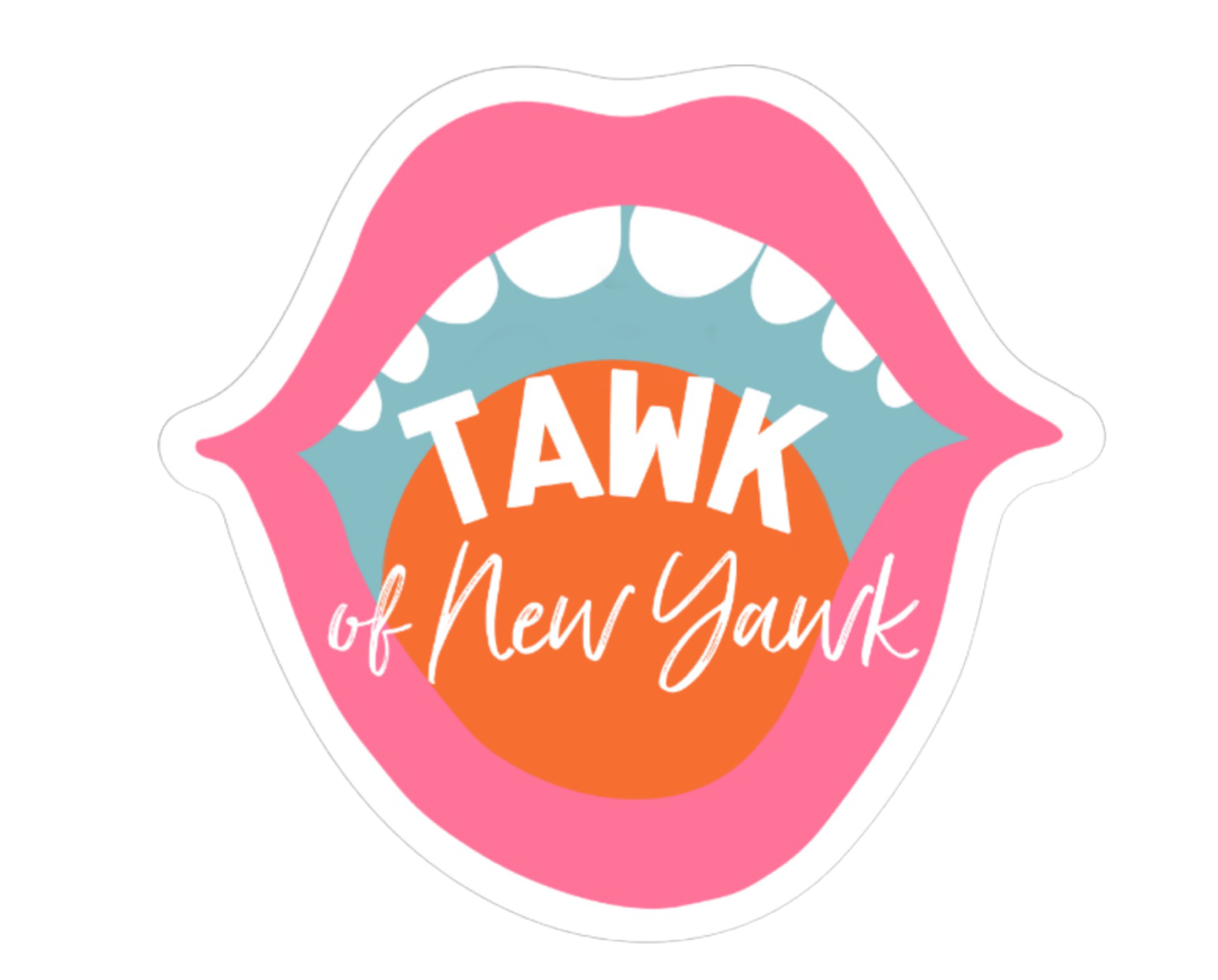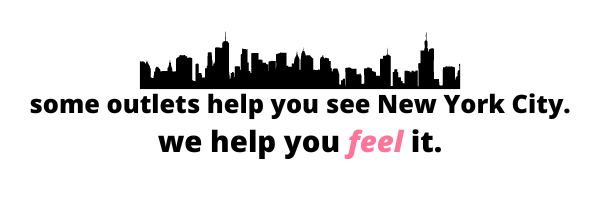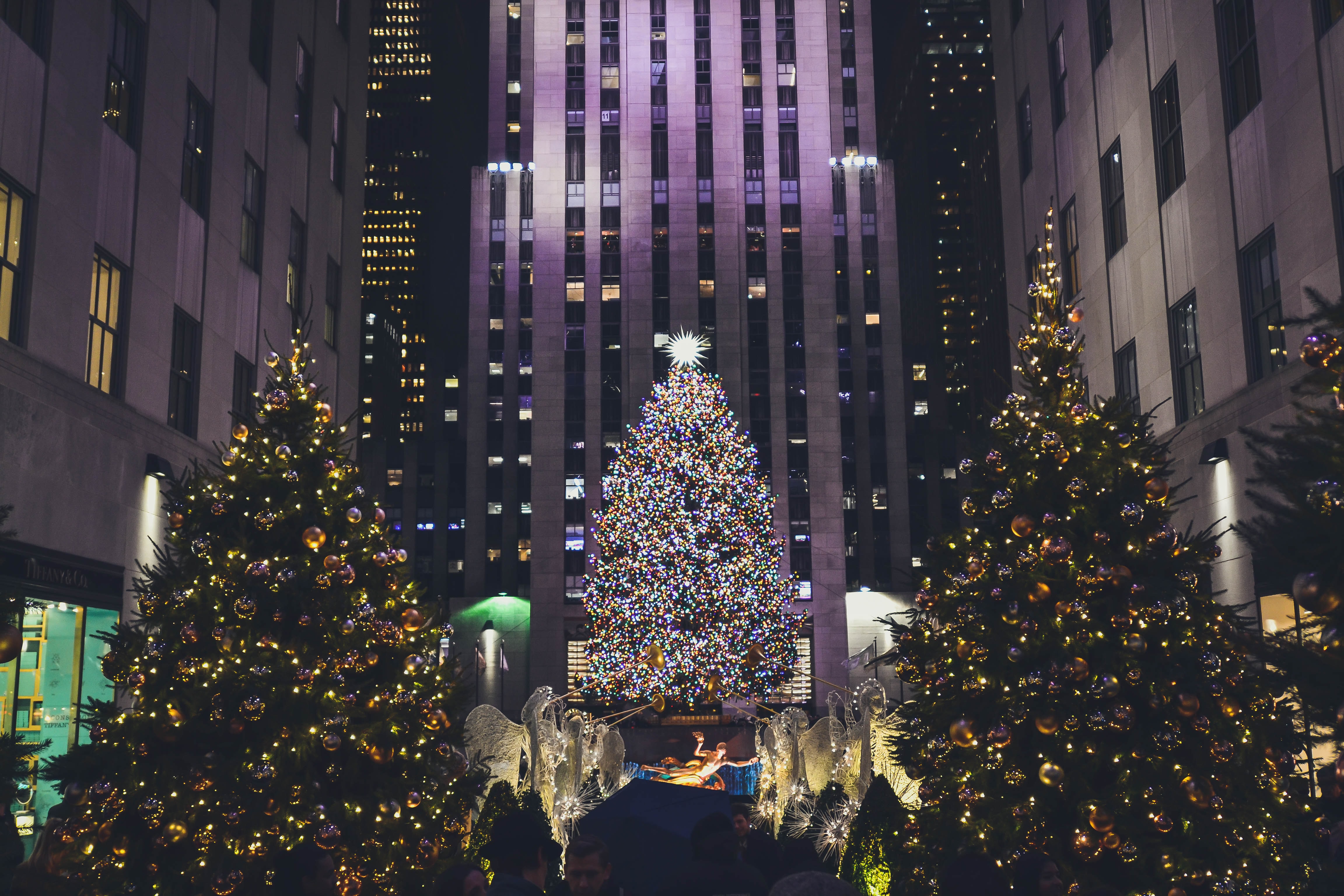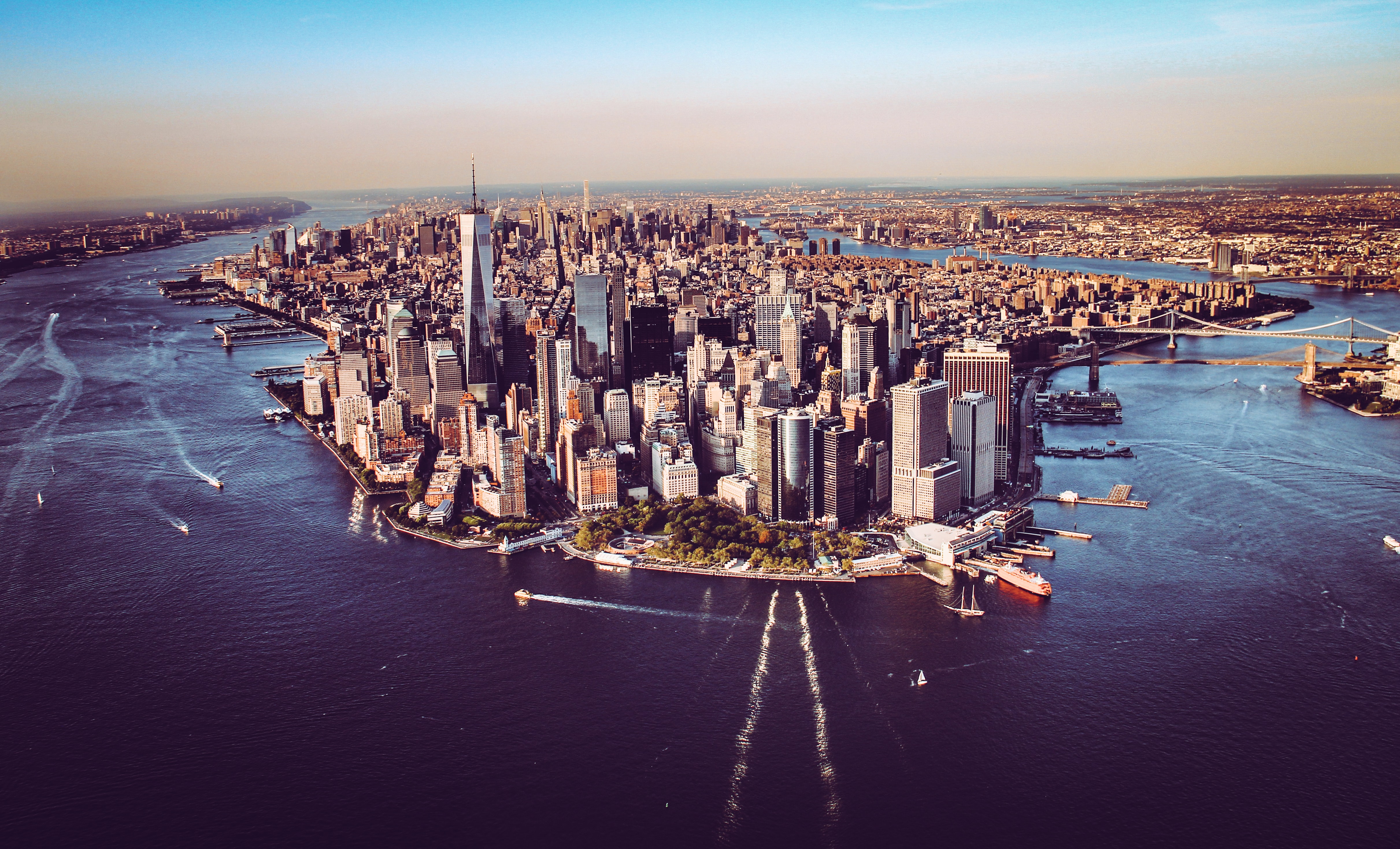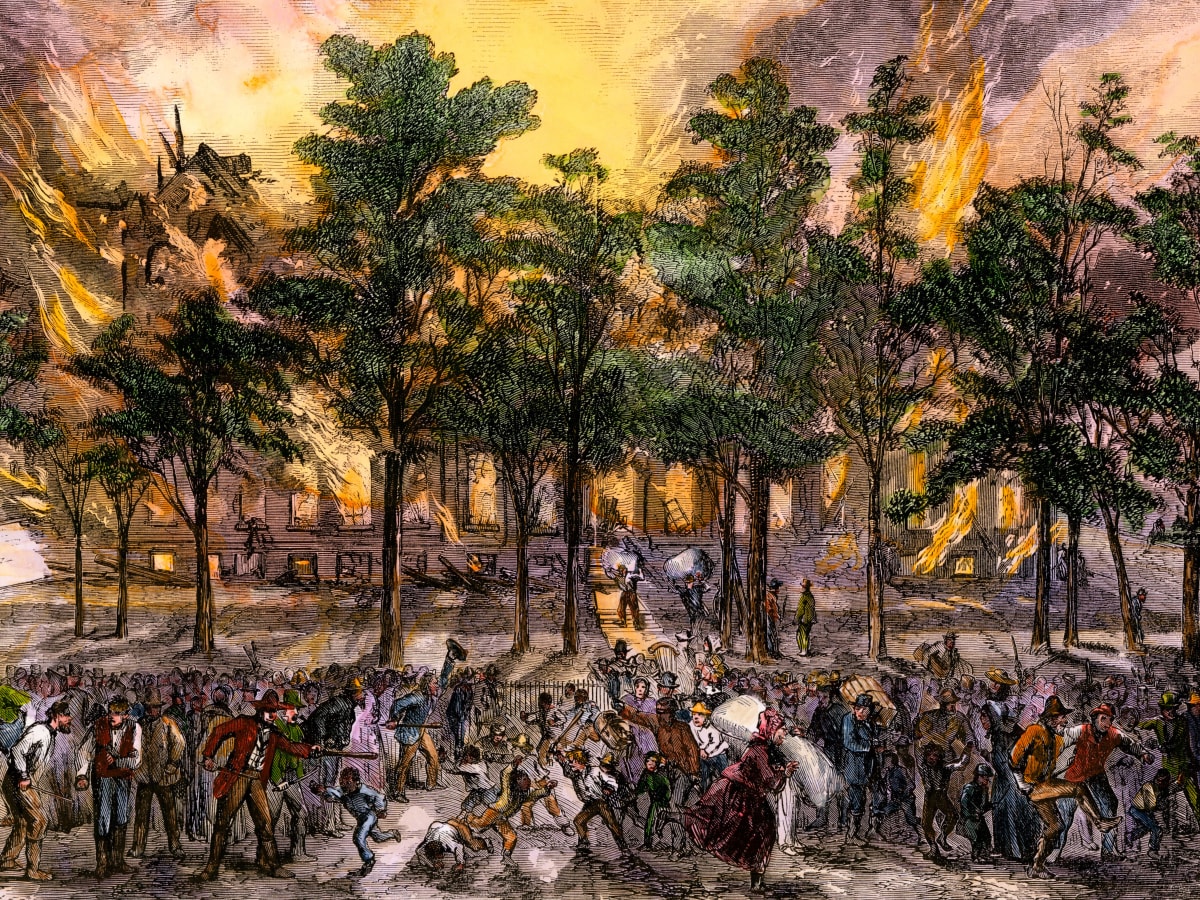

Do you know the one thing that makes summer more bearable? Movies. I love a good film in an air-conditioned room. This time, it was a rewatch of the fabulous The Gangs of New York. Do you know what else makes summers in New York more bearable? Riots. There is nothing like protesting some injustice turned violent mobs in the summer heat…in the middle of the city… in 1863.
The July 13th—16th, 1863 Riots were some of the most destructive and violent in the United States. New York City exploded into a chaos that rocked the city. It was this violence that Martin Scorsese and baby Leonardo captured in their film.
A Conscription Is Issued
The infamous 1863 Draft Riots were in response to the contentious March 3rd Union Army Draft instituted by the Federal Government. Discord had started earlier in 1862 when President Abraham Lincoln had issued the Emancipation Proclamation, which caused protests in the city. City workers were afraid that formerly enslaved people were replacing their jobs. Some military members were upset because they had joined up to protect the Union, not fight to abolish slavery.
Volunteer re-enlistment numbers were down, and the army was in dire need of men. The government passed a conscription law, set up a lottery, and stated that all single men between 20-45 and married men between 20 and 35 were eligible to be drafted into the Union army. This draft included immigrants who had filed for citizenship but did not include any black men as they technically were not citizens.
The act infuriated the governor of New York. He felt that New York State had given more than its fill of the quota for armed men. The governor wanted to continue recruiting volunteers for the army instead. He was also upset that the draft targeted New York City more heavily than other parts of the city.
New Yorkers aren’t having it
Citizens took news just as well as one would expect, they were outraged by the lottery system. A man could buy a substitute for himself for a large sum of $300, roughly a year’s salary for the average worker. Only the rich could avoid the draft, prompting the phrase, “A rich man’s fight and a poor man’s war.”
At the time, there was already a host of tension. A sizable Irish Immigration population made up New York City. “Native” born Americans and the government ensured the immigrants knew they weren’t welcome. On top of that, working-class citizens faced inflation, poor working conditions with poor pay, racial, religious, and economic resentment, and mistreatment by the government and employers.
Like similar drafts in the past, antiwar and pro-war newspapers started a headline war, slinging mud at each other and riling up the working class. Instituting the draft was just the match to an already fragile powder keg that exploded the morning of the first draft drawing on July 13th, 1863.
Protests Turned Riots

Like any good New Yorker, a large group braved the sweltering heat, carrying signs and banging pans, protesting in the streets. Some of the protesters marched on the Provost Marshal’s (head of the military police) office, where the draft would occur later in the morning. Before long, a large crowd had gathered. A local newspaper reported:
“The drawing was actually commenced about 10 o’clock and from 75-1000 names had been drawn from the wheel and announced, when suddenly the report of a pistol was heard in the street. This seemed to be the signal for an attack upon the office, for almost upon the instant, a perfect shower of brickbats, paving stones and other missiles were hurled from the street into the building, which, of course, took everybody by surprise.” Link to Paper
(A side note: I always love when someone says, “It was a surprise!” Things are only surprises to people not listening.)
The large drawing of so many Irish names enraged the crowd. They rioted, setting fire to the marshal’s office and beating a police superintendent to death. For three days, violence engulfed the city. The mob lit fire to well-known Republican houses, Protestant churches, charities, and arsenals. The crowd sought out anyone they disagreed with and enacted revenge.
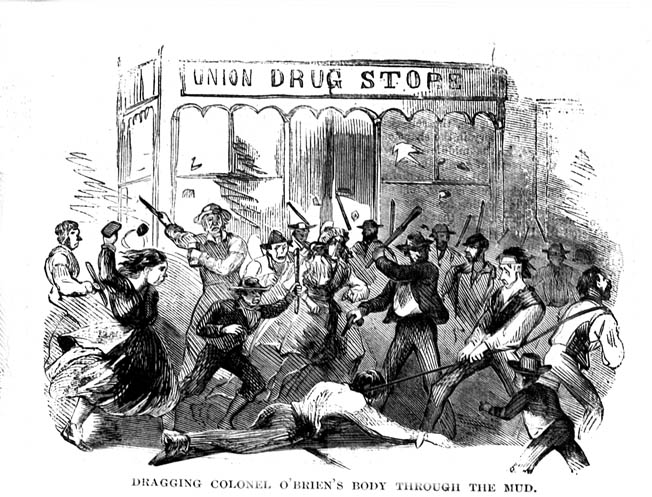
The violence quickly became racial, as the primary target became black families and businesses. Rioters set The Colored Orphan’s Asylum on 44th ablaze. Thankfully people were able to rescue the children from the flames. During the several-day riots, mobs lynched black men. Although the official number of deaths is 11, scholars estimate that the mob murdered many more.
By July 15th, troops who had recently fought at the Battle of Gettysburg came to the city to help quell the riots. The city continued the draft a few days after the riot but called fewer people’s names.
The published number of deaths was 119, but it is estimated that the numbers go well into the thousands, with many of them being Black men. The city convicted at least 67 people for their role in the riots. To this day, The Draft Riots remain one of the highest losses of life in domestic violence in the United States.
The riot spotlights the disenfranchisement Irish Immigrants and Black people faced in New York City in the 19th century. Even though that was almost 200 years ago, many issues that sparked the riots still plague people of color and immigrants today.
Works Cited
https://www.tenement.org/blog/on-this-day-1863-the-new-york-city-draft-riots/
https://www.zinnedproject.org/news/tdih/draft-riots/
https://www.history.com/topics/american-civil-war/draft-riots
